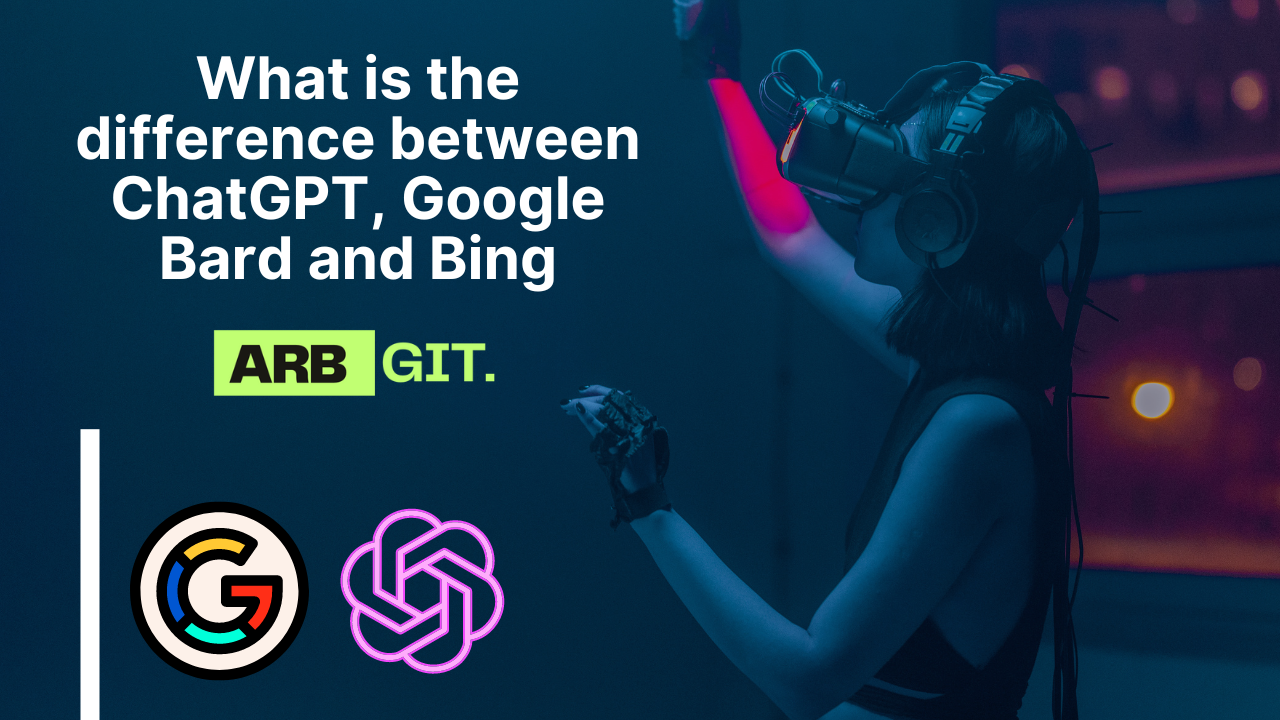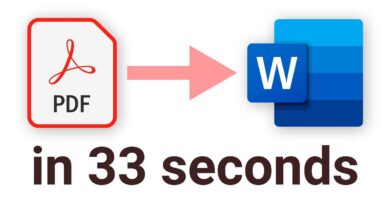What is the difference between ChatGPT, Google Bard and Bing

digital communication and search engines, users are often faced with the dilemma of choosing the right tool for their needs. The trio of ChatGPT, Google Bard, and Bing stands out as prominent players in this domain. Each platform comes with its unique set of features, capabilities, and limitations. This comprehensive guide aims to dissect the differences among them, shedding light on their functionalities and assisting users in making informed choices.
Unraveling ChatGPT: Conversations in the Digital Realm
Overview: ChatGPT, developed by OpenAI, represents a breakthrough in natural language processing (NLP). Unlike traditional search engines, ChatGPT focuses on generating human-like text responses, making it a popular choice for interactive conversations. Its underlying technology, powered by GPT-3.5 architecture, enables it to understand and respond to a wide array of queries, creating a conversational experience that closely mimics human interaction.
Key Features:
- Conversational Tone: ChatGPT excels in maintaining a conversational tone, providing users with an engaging and dynamic interaction.
- Contextual Understanding: The model is adept at grasping context, allowing for more coherent and contextually relevant responses.
- Diverse Applications: From content creation to programming assistance, ChatGPT’s versatility makes it a valuable tool across various domains.
Limitations:
- Lack of Search Functionality: Unlike traditional search engines, ChatGPT doesn’t perform web searches, limiting its scope to generated responses based on pre-existing knowledge.
- Information Accuracy: While ChatGPT strives for accuracy, it may occasionally provide information that is outdated or incorrect.
Google Bard: The Melody of Search
Overview: Google Bard, a brainchild of the search giant Google, is a next-generation search engine designed to harmonize the search experience. It leverages advanced algorithms and artificial intelligence to deliver more accurate and contextually relevant search results, raising the bar for traditional search engines.
Key Features:
- Enhanced Search Algorithms: Google Bard employs cutting-edge algorithms to interpret user queries, providing results with a higher degree of accuracy.
- Multimedia Integration: The search engine seamlessly integrates multimedia elements, offering a more immersive and informative search experience.
- Conversational Search: Google Bard embraces a conversational approach to search queries, understanding natural language input for more intuitive results.
Limitations:
- Learning Curve: Users accustomed to traditional search engines may face a learning curve when adapting to the conversational and multimedia-centric approach of Google Bard.
- Availability: As of now, Google Bard is gradually rolling out, and its availability may be limited in certain regions.
Bing: Beyond the Basics
Overview: Bing, Microsoft’s contribution to the search engine arena, has carved its niche by offering an alternative to the more dominant players. Known for its user-friendly interface and unique features, Bing stands as a formidable contender in the search engine market.
Key Features:
- Visual Search: Bing distinguishes itself with a strong emphasis on visual search, allowing users to search for information using images instead of text.
- Integration with Microsoft Services: Bing seamlessly integrates with Microsoft’s suite of services, providing a cohesive experience for users within the Microsoft ecosystem.
- Rewards Program: Bing Rewards incentivizes users with various perks, encouraging loyalty and frequent usage.
Limitations:
- Search Volume: Bing’s search volume is generally lower than that of Google, which can affect the breadth of search results and availability of specific information.
- Third-Party Integrations: Some users may find that certain third-party integrations and compatibility are better supported by other search engines.
Decoding the Differences
Search Mechanism:
- ChatGPT: Primarily focused on generating human-like text responses based on pre-existing knowledge.
- Google Bard: Utilizes advanced algorithms and AI to interpret user queries, delivering accurate and contextually relevant search results.
- Bing: Stands out with visual search capabilities, allowing users to search using images, and integrates seamlessly with Microsoft services.
User Experience:
- ChatGPT: Offers a dynamic and engaging conversational experience.
- Google Bard: Enhances user experience with multimedia integration and a conversational search approach.
- Bing: Prioritizes a user-friendly interface and visual search, catering to a diverse range of preferences.
Scope and Limitations:
- ChatGPT: Limited to generating responses based on existing knowledge, lacks web search functionality.
- Google Bard: Aiming for a more intuitive search experience, may have a learning curve for users accustomed to traditional search engines.
- Bing: Known for visual search and integration with Microsoft services, may have lower search volume compared to Google.
Choosing the Right Companion
In the realm of digital tools, selecting the right companion depends on individual needs and preferences. ChatGPT, Google Bard, and Bing each bring something unique to the table, catering to diverse user requirements. Whether you prioritize conversational interaction, cutting-edge search algorithms, or visual search capabilities, understanding the distinctions among these platforms is crucial for making an informed decision.
In conclusion, the landscape of digital communication and search engines continues to evolve, with ChatGPT, Google Bard, and Bing leading the way. Each platform offers a distinct set of features and functionalities, contributing to a rich and varied digital experience. As users navigate the ever-expanding array of tools, being aware of the nuances among these platforms empowers them to make choices aligned with their specific needs and preferences.
Navigating the Digital Ecosystem: A Deeper Dive
The Power of Natural Language Processing
ChatGPT’s Language Prowess: At the heart of ChatGPT’s capabilities lies its proficiency in natural language processing (NLP). The GPT-3.5 architecture enables the model to understand not just the literal meaning of words, but also the context and nuances in language. This makes ChatGPT a valuable asset in generating coherent and contextually relevant responses, whether it be in casual conversation or assisting with complex queries in various domains.
Example Scenario: Consider a scenario where a user seeks programming assistance. ChatGPT’s contextual understanding allows it to provide code snippets, explanations, and debugging tips, fostering a dynamic and educational conversation.
The Symphony of Search Algorithms
Google Bard’s Algorithmic Symphony: Google Bard takes the orchestration of search algorithms to new heights. Its algorithms, powered by machine learning and AI, continuously learn and adapt to user behavior. This dynamic approach enhances the accuracy of search results, making Google Bard a potent tool for users who prioritize precision in their online searches.
Example Scenario: Imagine a user searching for the latest developments in artificial intelligence. Google Bard’s algorithms, attuned to user preferences, may deliver not only textual results but also curated multimedia content such as videos, infographics, and interactive presentations for a more comprehensive understanding.
Bing’s Visual Symphony
Bing’s Visual Search Symphony: Bing’s emphasis on visual search sets it apart in the search engine symphony. Users can initiate searches using images rather than relying solely on text. This visual-centric approach expands the horizons of search capabilities, catering to those who find images more intuitive and expressive.
Example Scenario: Suppose a user comes across an unknown plant and wishes to identify it. Bing’s visual search allows them to upload a picture of the plant, and the search engine returns information about the plant’s name, habitat, and care instructions.
Facing Challenges Head-On
ChatGPT’s Challenge: Web Search Dilemma
The Web Search Void: While ChatGPT excels in generating text-based responses, it falls short in web search functionality. This limitation restricts its ability to fetch real-time information or retrieve data beyond its pre-existing knowledge. Users seeking the latest news or live updates may find this aspect challenging.
Example Scenario: If a user is interested in the current stock prices of a specific company, ChatGPT may struggle to provide up-to-the-minute information, as it lacks the capability to perform real-time web searches.
Google Bard’s Learning Curve
Adapting to a New Rhythm: For users accustomed to traditional search engines, adapting to Google Bard’s conversational and multimedia-centric approach may pose a learning curve. The transition from a text-heavy interface to a more dynamic and interactive one could be challenging for some users.
Example Scenario: A user accustomed to straightforward keyword searches might initially find Google Bard’s conversational interface, which encourages more natural language input, a departure from their usual search habits.
Bing’s Volume Challenge
The Search Volume Symphony: While Bing offers a unique visual search experience and integrates seamlessly with Microsoft services, it faces a challenge in terms of search volume. The lower search volume compared to industry giant Google could impact the breadth of search results, particularly for niche or specific queries.
Example Scenario: A user looking for obscure or specialized information may find that Bing’s lower search volume results in fewer relevant hits compared to a higher-traffic search engine.
Making an Informed Decision
As users traverse the digital landscape, the decision-making process hinges on individual preferences, requirements, and adaptability. Whether one opts for the dynamic conversation facilitated by ChatGPT, the algorithmic precision of Google Bard, or the visual-centric approach of Bing, understanding the intricacies of each platform is paramount.
Evaluating User-Friendliness
ChatGPT’s Engaging Conversations: For users seeking a conversational companion, ChatGPT’s engaging and dynamic interactions can be a breath of fresh air. Its ability to maintain context and provide personalized responses contributes to a user-friendly experience, particularly for those looking beyond conventional search paradigms.
Example Scenario: A user exploring creative writing ideas may appreciate ChatGPT’s ability to generate imaginative and contextually relevant prompts, fostering a collaborative and inspiring writing session.
Google Bard’s Multimedia Integration: Google Bard’s user-friendliness manifests in its seamless integration of multimedia elements. Users who value a visually enriched search experience will find Google Bard’s incorporation of videos, images, and interactive content appealing.
Example Scenario: An art enthusiast searching for information about a famous painting may benefit from Google Bard’s multimedia integration, allowing them to view the artwork, watch related videos, and explore interactive exhibitions.
Bing’s Visual Appeal: Bing’s emphasis on visual search contributes to its user-friendly interface. For those who prefer an intuitive and visually driven approach to information retrieval, Bing provides a refreshing alternative.
Example Scenario: A user planning a vacation might find Bing’s visual search particularly useful when exploring destinations, as they can view images, read travel blogs, and gather information in a more visually immersive manner.
Tailoring the Search Experience
ChatGPT’s Versatility: ChatGPT’s versatility shines through in its diverse applications. From assisting with coding challenges to brainstorming ideas for creative projects, ChatGPT’s adaptability makes it a valuable tool across a spectrum of tasks.
Example Scenario: A user seeking programming assistance may engage ChatGPT in a coding dialogue, receiving real-time feedback, suggestions, and explanations, enhancing their coding proficiency.
Google Bard’s Contextual Relevance: Google Bard’s strength lies in its contextual understanding, ensuring that search results align with user intent. This contextual relevance enhances the overall search experience, providing users with precisely what they’re looking for.
Example Scenario: A user researching historical events may appreciate Google Bard’s ability to contextualize queries, presenting a timeline of events, related articles, and multimedia content for a comprehensive exploration.
Bing’s Integration with Microsoft Services: For users embedded in the Microsoft ecosystem, Bing’s seamless integration with Microsoft services presents a cohesive digital experience. This integration allows for streamlined access to emails, documents, and other Microsoft-related functions.
Example Scenario: A user who primarily uses Microsoft tools for work may find Bing’s integration beneficial, as it allows them to access their Microsoft services and perform searches within a unified environment.
Conclusion: Harmonizing Choices in the Digital Symphony
In the intricate symphony of ChatGPT, Google Bard, and Bing, each platform contributes its unique notes, creating a harmonious yet diverse digital landscape. As users navigate the nuances and capabilities of these tools, the choice ultimately boils down to personal preferences, requirements, and the specific demands of the task at hand.
The evolving digital ecosystem welcomes innovation, and ChatGPT, Google Bard, and Bing stand as testaments to the continual progression in digital communication and search technologies. As users embark on their digital journeys, armed with the knowledge of what each platform brings to the table, they can make informed decisions, selecting the companion that resonates most with their digital aspirations. In this dynamic and ever-expanding digital symphony, the power to orchestrate a personalized and fulfilling experience lies in the hands of the user.




